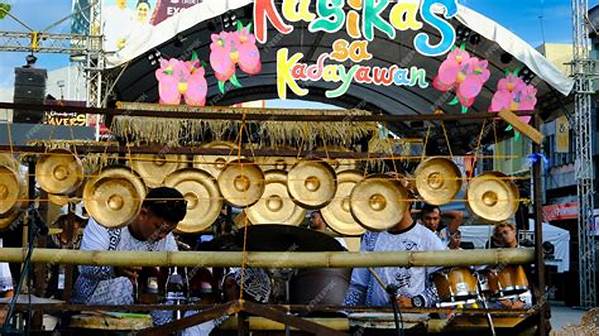- The Role of Music in Preserving Tribal Histories
- Ancient Instruments: Bridges to the Past
- Practical Uses of Nomadic Instruments
- The Emotional Power of Musical Heritage
- Exploring the Detailed Features of These Instruments
- The Significance of Understanding These Instruments in Today’s Context
- The Legacy and Future of Nomadic Music Traditions
Have you ever wondered how ancient nomadic tribes, constantly on the move, managed to pass down their rich histories and legends through countless generations? The answer lies in the enchanting world of music instruments. These are not mere objects but are voices echoing tales of heroism, love, and the vast landscapes the tribes once roamed. Today, we’re diving into the fascinating realm of these musical instruments used by nomadic tribes to share ancient stories. Prepare to embark on a journey that merges history, art, and culture into one compelling narrative.
Read More : List Of Popular String Instruments In Southeast Asia 2025
While modern society communicates through smartphones and social media, imagine a world where music was the primary medium to convey stories and emotions. This was the reality for nomadic tribes, whose instruments transcended mere entertainment. They were powerful mnemonic devices, enabling the retelling of epic sagas and ancestral knowledge, even in the absence of written language. Let’s explore how these instruments continue to captivate us today.
The Role of Music in Preserving Tribal Histories
Music served as more than just entertainment for nomadic tribes. It was an invaluable tool in preserving their histories and cultures. Instruments like the nomadic jaw harp or didgeridoo, with their unique melodies, resonated across vast terrains, effectively acting as a communal form of communication.
Tribes used these instruments not only for storytelling but also for education. Young generations learned their heritage, ancestors’ exploits, and tribal lore, ensuring that their cultural legacy endured centuries. Imagine a campfire, the air filled with the rhythmic beats of a drum or the haunting notes of a flute, as stories came alive in the flickering flames. It’s storytelling at its finest — raw, direct, and profoundly moving.
Ancient Instruments: Bridges to the Past
Instruments Played by Nomadic Tribes
The diversity of instruments used by nomadic tribes is a testament to their rich cultural tapestries. Each instrument carries a unique sound that reflects the environment and lifestyle of its people. For example, the Mongolian horsehead fiddle, or morin khuur, produces sounds reminiscent of galloping horses, a nod to the Mongol warriors’ equestrian skills. Understanding these instruments is akin to unlocking secrets of ancient civilizations.
Unique Sounds and Craftsmanship
Craftsmanship played a crucial role in the creation of these instruments. Each was meticulously crafted using natural materials available in the tribes’ territories. The sounds produced were often a direct reflection of the environment — whether it was the whistle of the wind across the steppes or the rustling of leaves in a dense forest. This connection between nature and music fostered a deep spiritual bond, making music an integral part of their daily lives.
Practical Uses of Nomadic Instruments
Music as Community Connective Tissue
Music instruments used by nomadic tribes to share ancient stories weren’t just about historical recollection. They served as connective tissue within communities, reinforcing social bonds and facilitating communication. Instruments like drums were pivotal during rituals and gatherings, bringing people together in moments of celebration or worship.
Tribal Gatherings and Communication
Nomadic tribes leveraged music during communal gatherings. Whether during a wedding, a rite of passage, or a seasonal festival, music set the tone and underscored the significance of the event. The universal language of music transcended linguistic barriers, enabling tribes to form alliances and friendships with neighboring communities.
The Emotional Power of Musical Heritage
The intangible allure of these instruments lies in their emotional depth. When played, they evoke a range of feelings, from nostalgia and longing to joy and triumph. A single note can carry the weight of centuries, connecting the present to a time long past. This deep emotional connection reinforces the tribe’s identity, serving as a reminder of unity and shared history.
Read More : Tips For Maintaining The Cleanliness Of Copper Wind Instrument Mouthpieces
Modern Interpretations and Continuations
In today’s world, musicians and anthropologists alike strive to keep these traditions alive. Contemporary artists are rejuvenating these ancient sounds by blending them with modern music elements, ensuring that the legacy of music instruments used by nomadic tribes to share ancient stories remains vibrant.
Exploring the Detailed Features of These Instruments
The Significance of Understanding These Instruments in Today’s Context
Understanding these music instruments used by nomadic tribes offers valuable insights into human creativity and adaptability. They remind us that stories can transcend time and remain relevant, even thousands of years later. With their enchanting sounds and rich histories, these instruments inspire modern generations to preserve and celebrate cultural heritage.
An Invitation to Experience
Should you desire to experience the magic of these instruments, consider attending cultural festivals or museum exhibitions dedicated to nomadic tribes. Such events offer a rare glimpse into the past, where music was a vibrant tapestry, weaving together the threads of human existence.
—
The Legacy and Future of Nomadic Music Traditions
The legacy of music instruments used by nomadic tribes to share ancient stories extends beyond historical anecdotes. It’s a living tradition, shimmering on the horizon of cultural exploration. By participating in efforts to preserve and revive these sounds, we can ensure that future generations will continue to be enchanted by these timeless tales.
In summary, the music instruments used by nomadic tribes are not just relics of a bygone era; they are vital links to our shared human heritage. They teach us the power of music not only as an art form but also as a vessel of storytelling, uniting past with present in a dance of timeless rhythm and melody. Join us in celebrating this rich legacy and let your mind travel back to where every note played was a story waiting to unfold.
